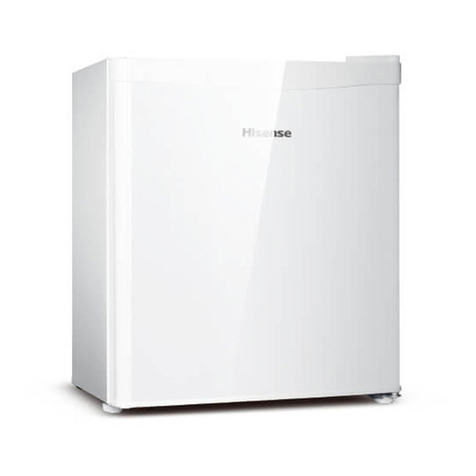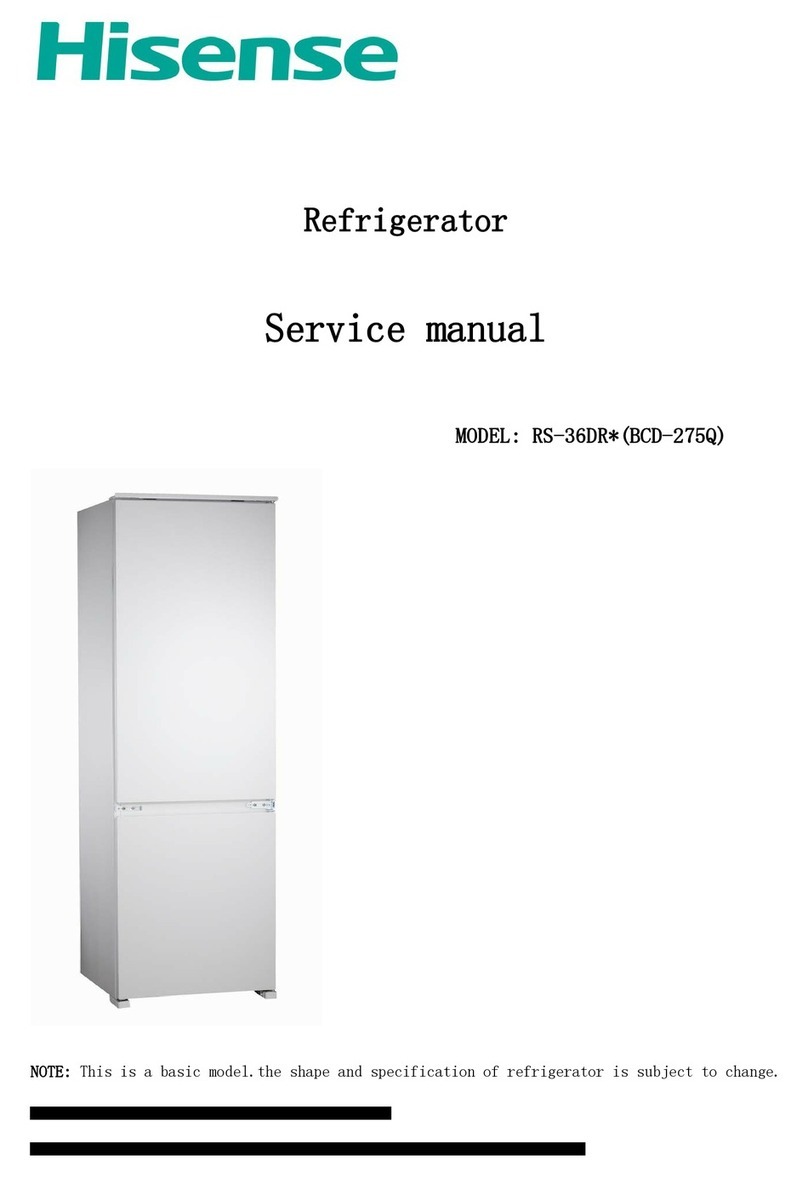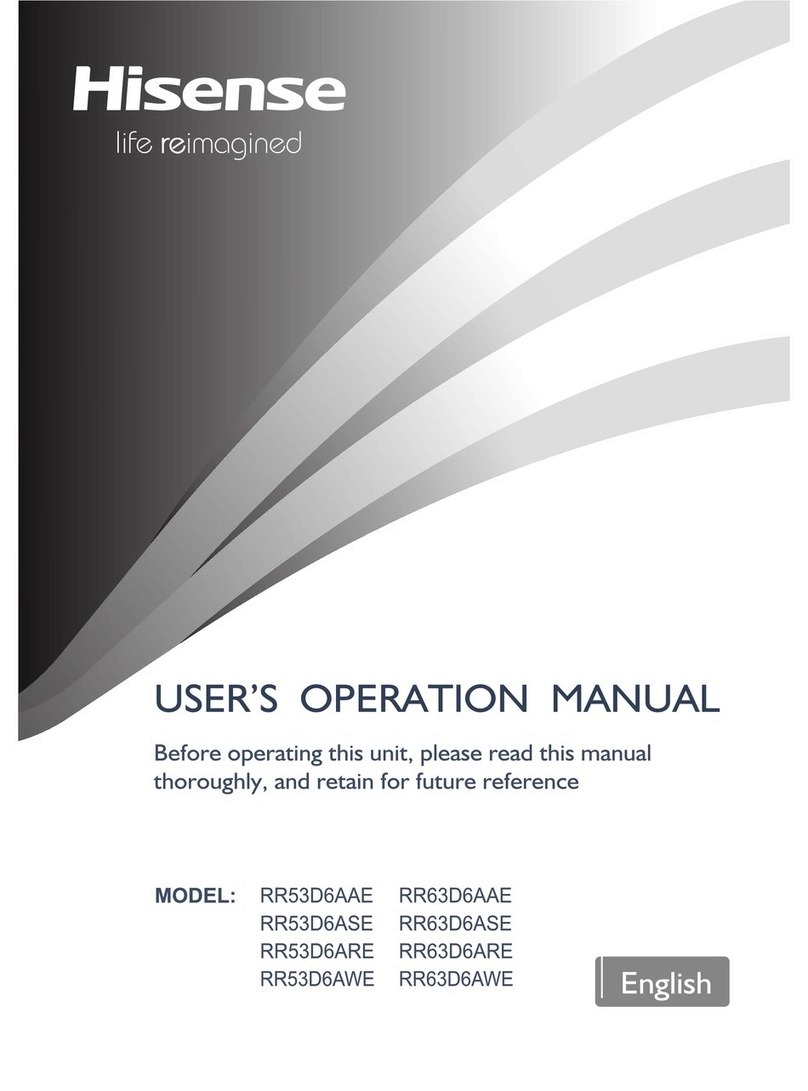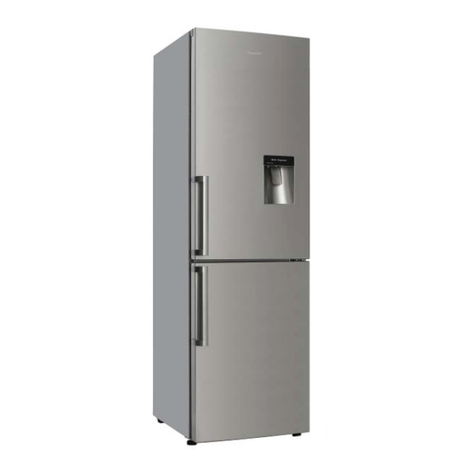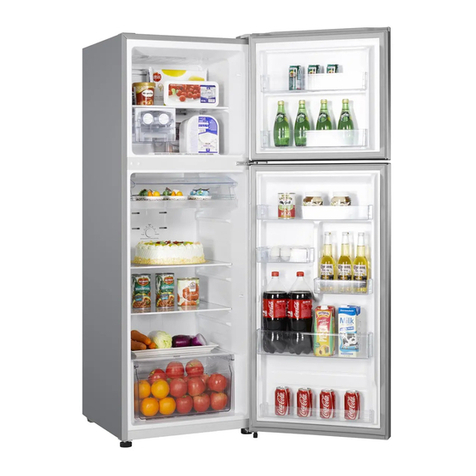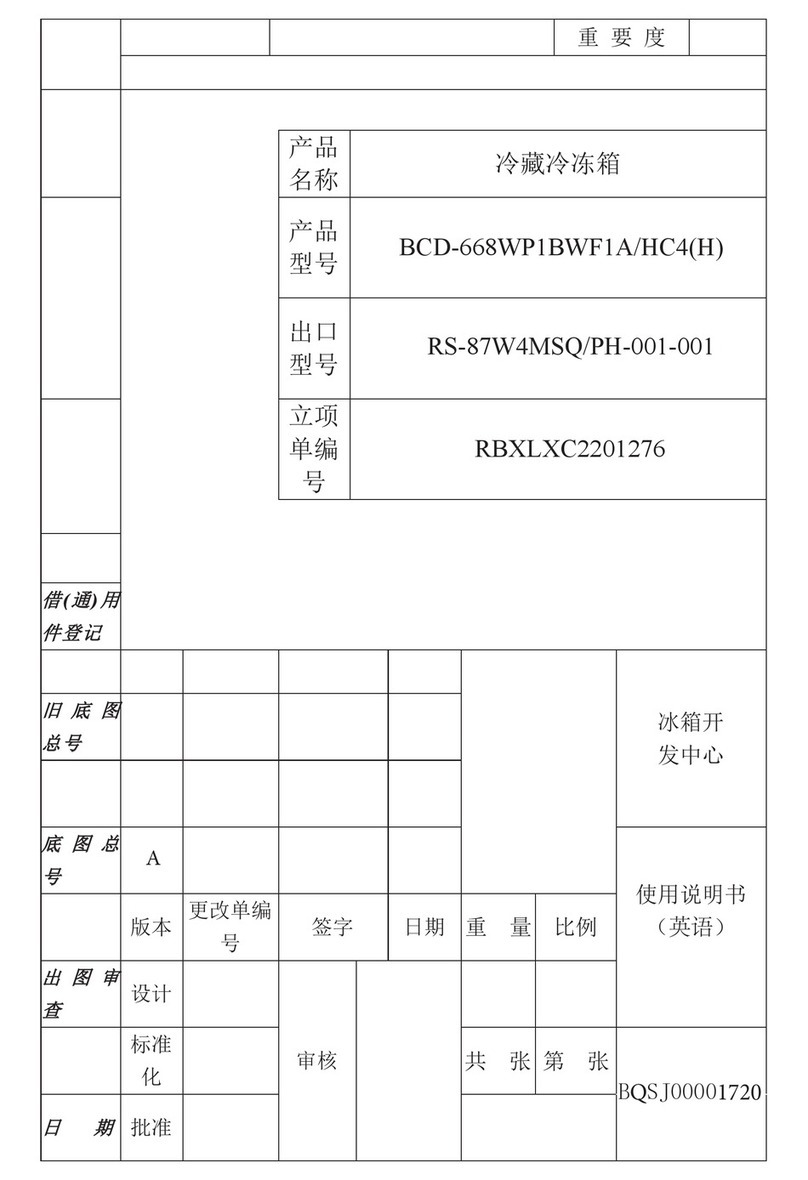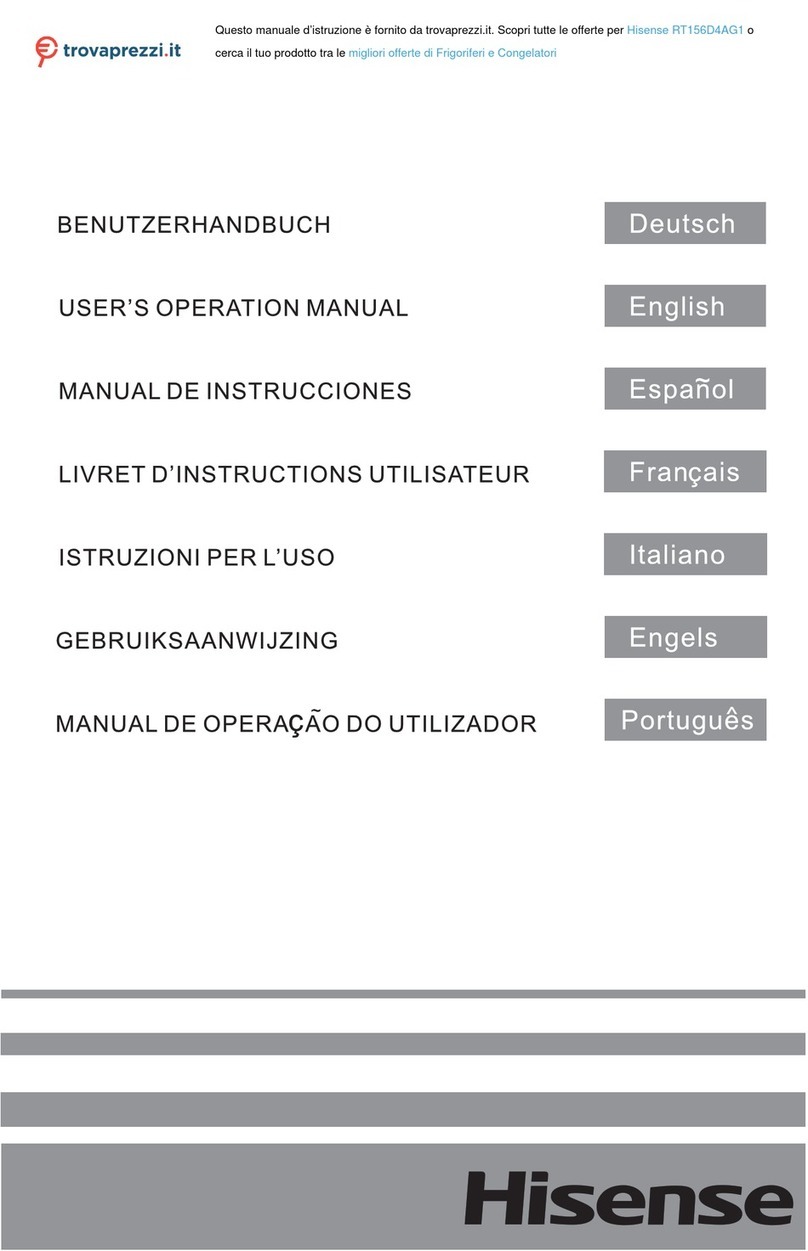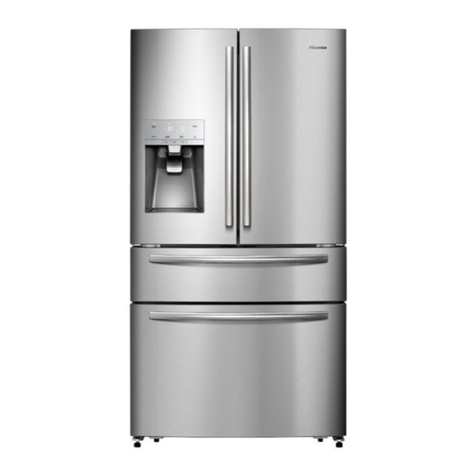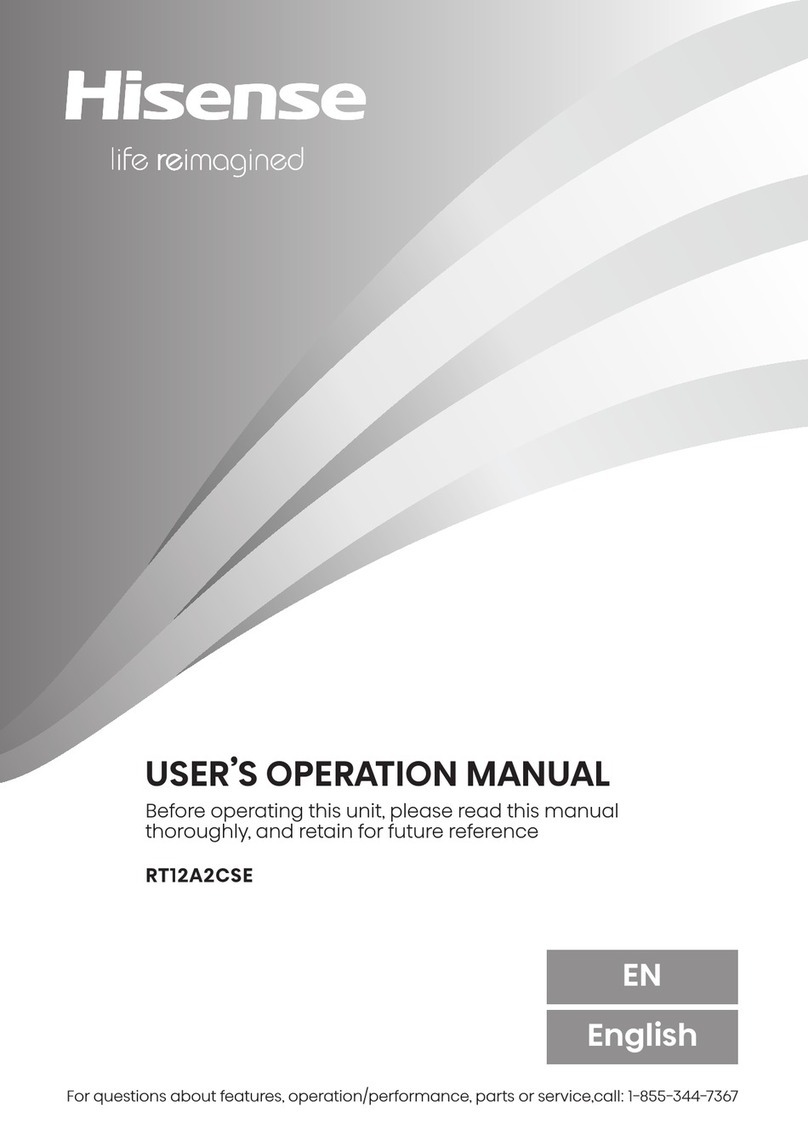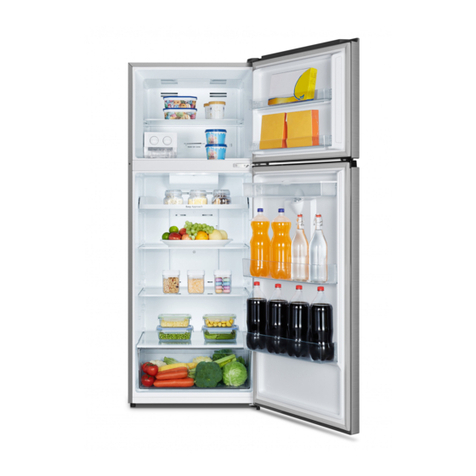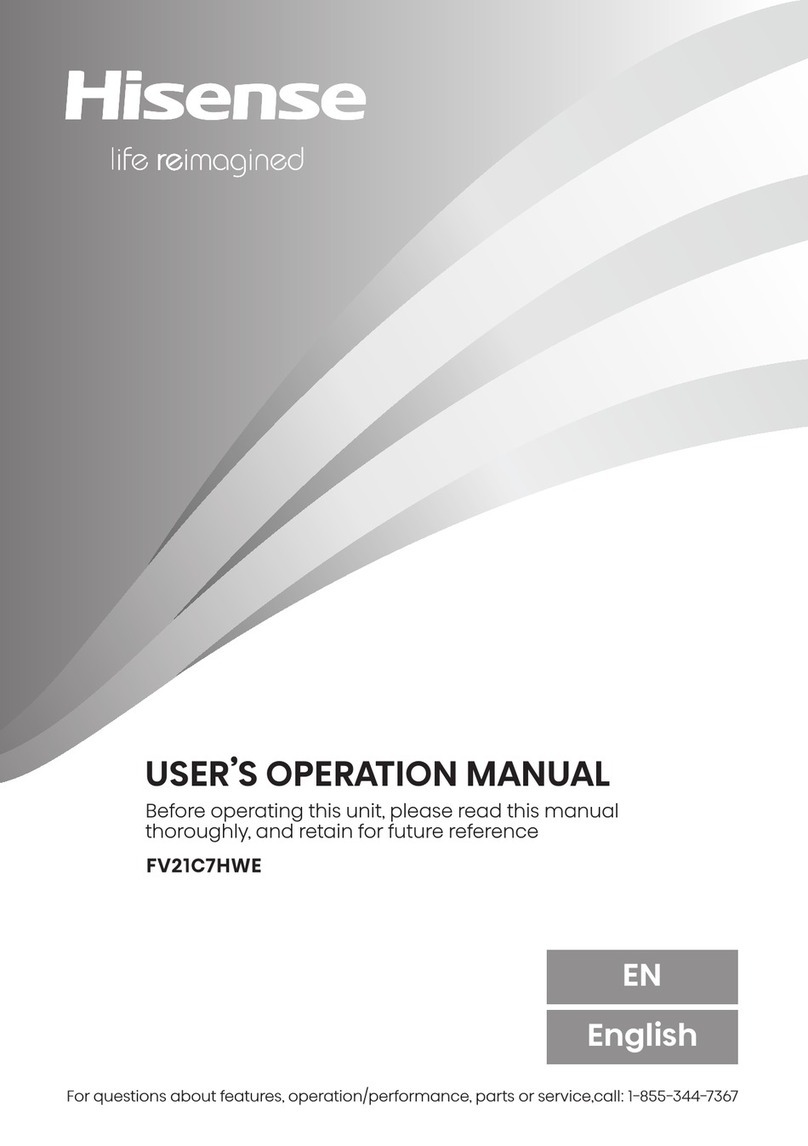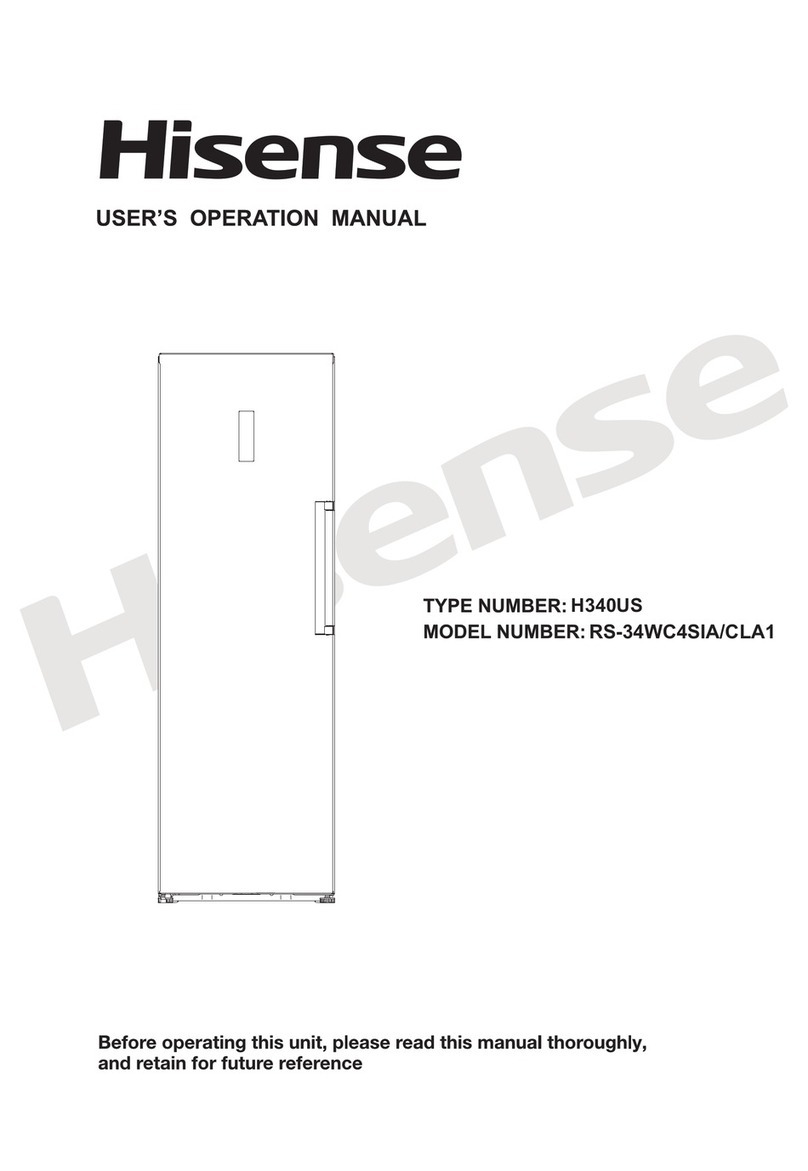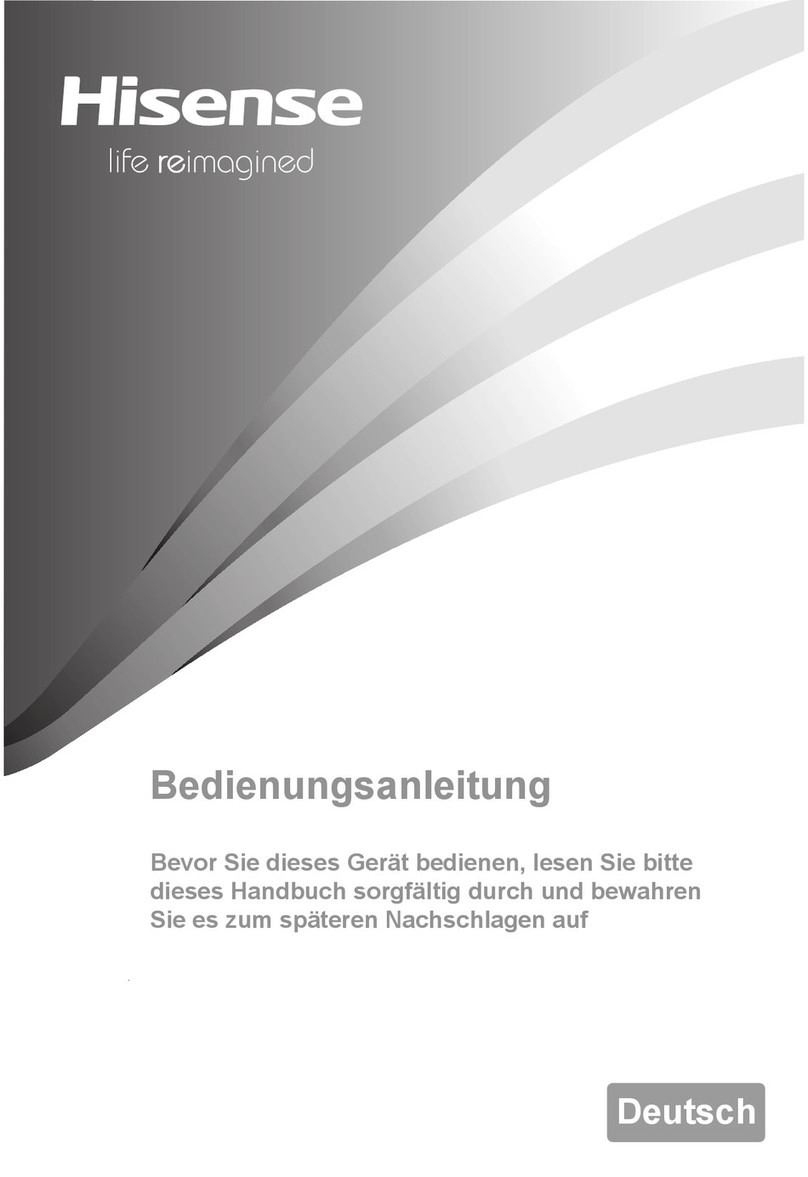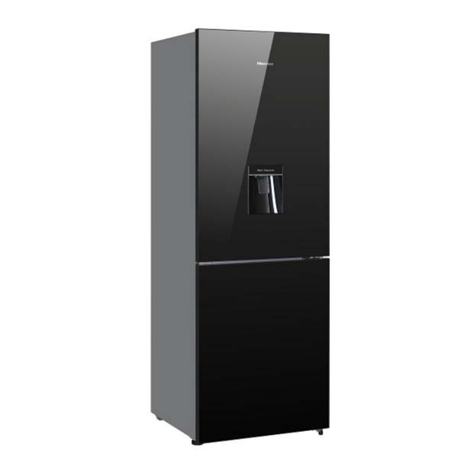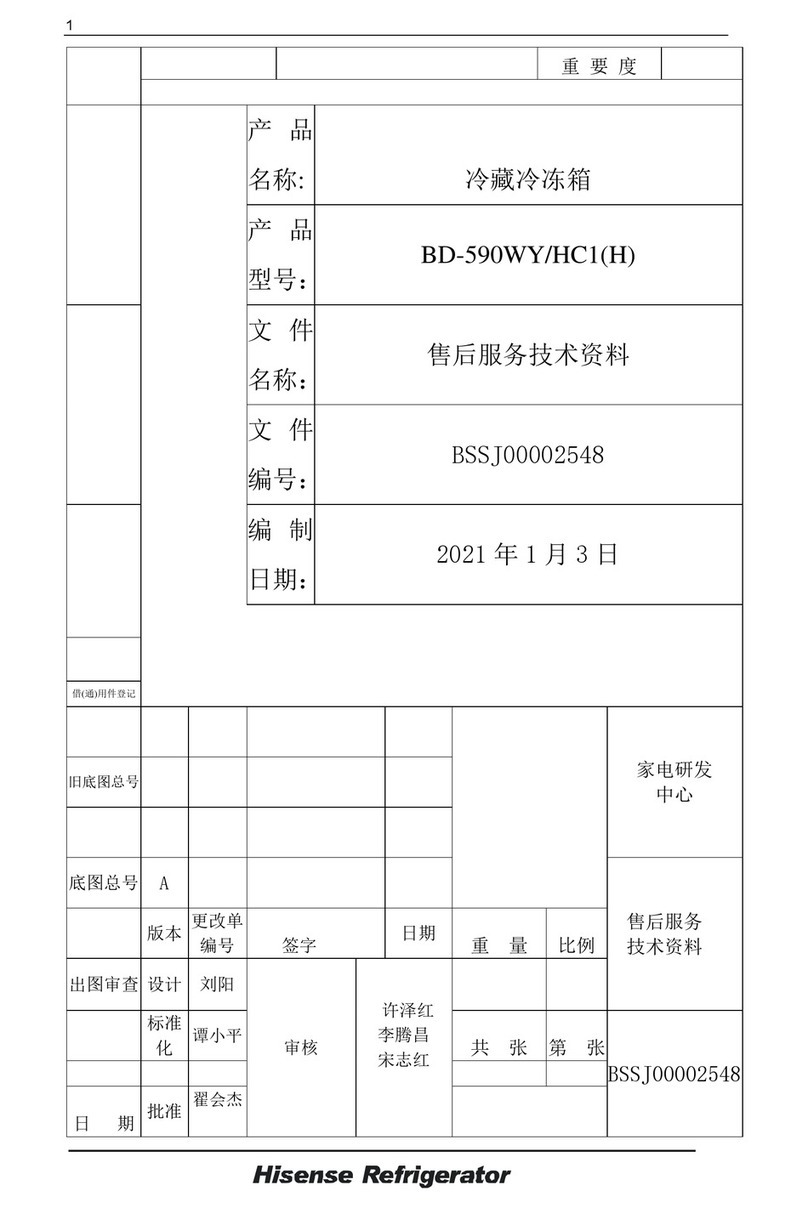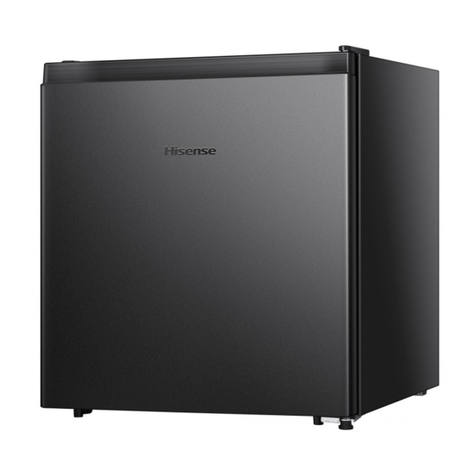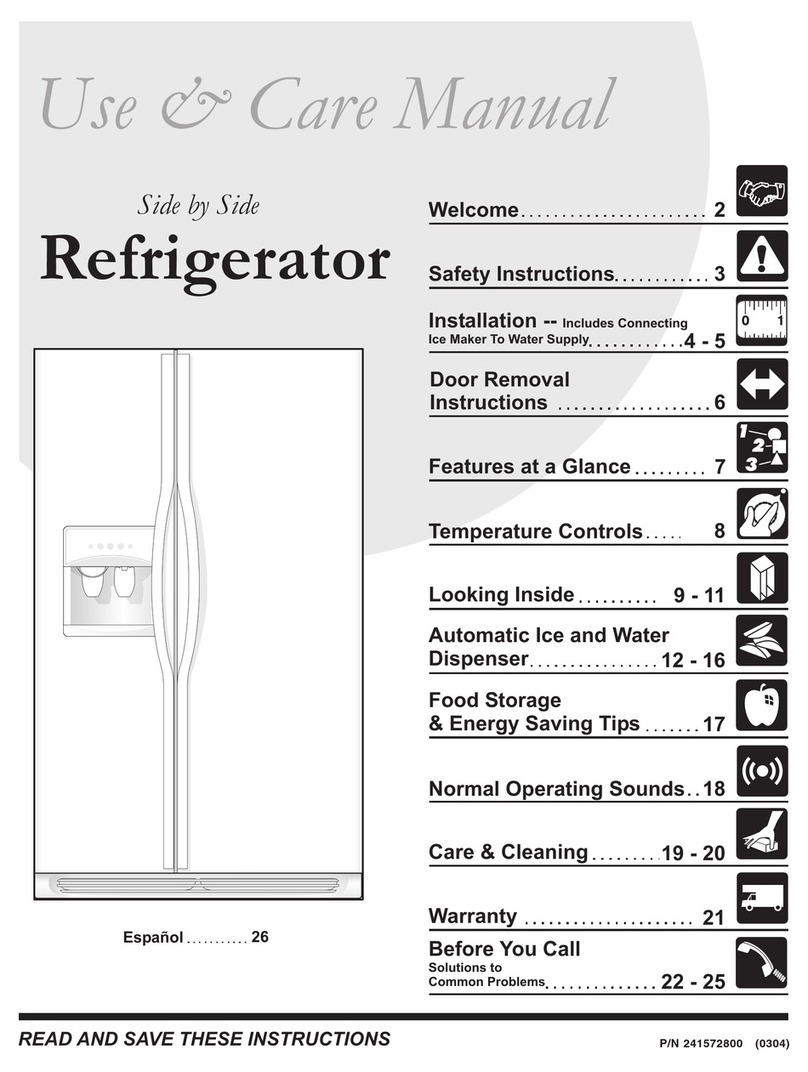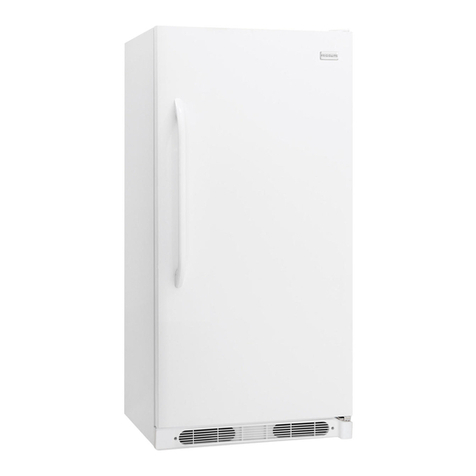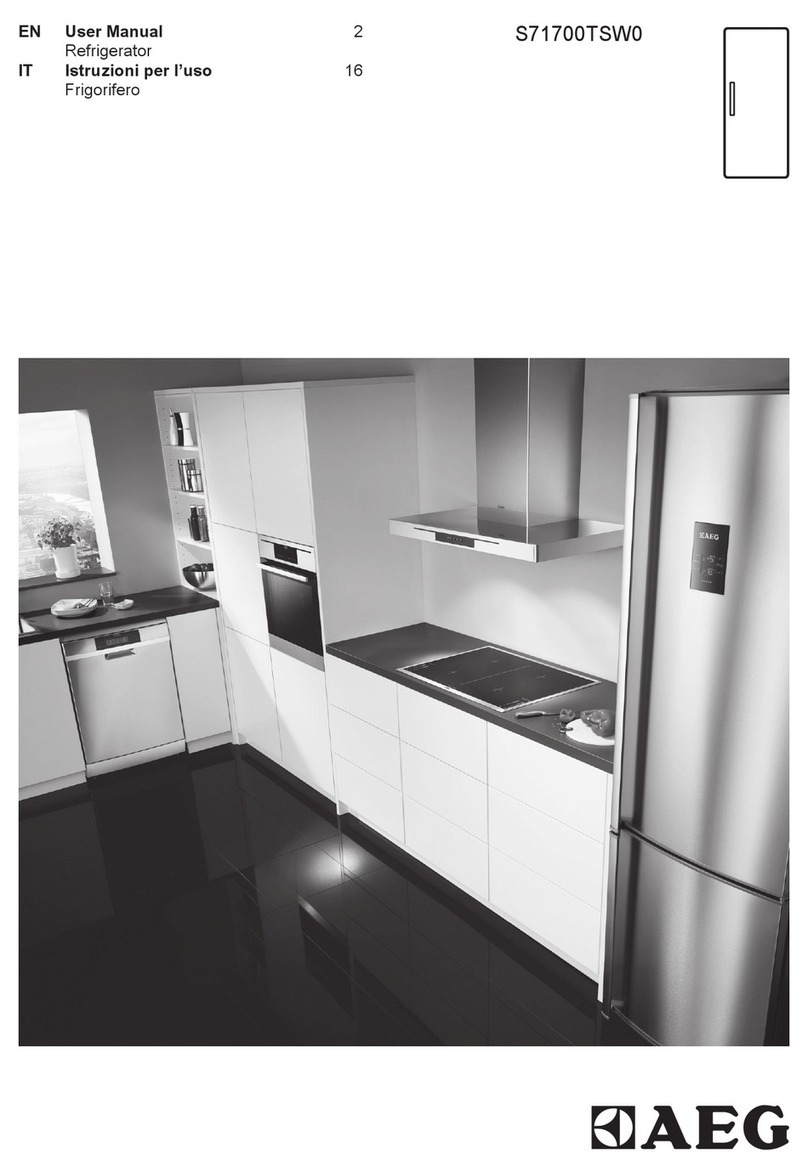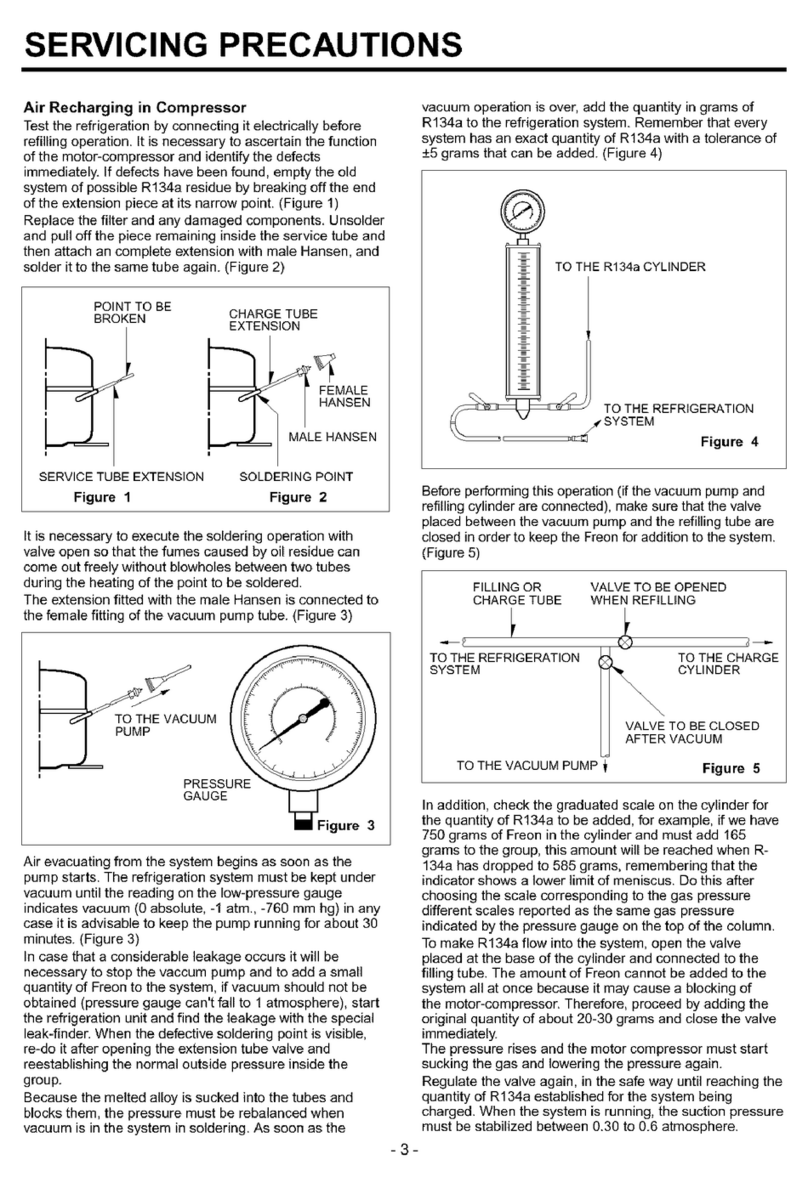
General safety and daily use
It is important to use your appliance
safely. We recommend that you follow the
guidelines below.
Store any food in accordance with the
storage instructions from the manufacturer.
Important Safety Instructions
Safety for children and
other persons
Don't try to repair the appliance yourself.
It is dangerous to alter the
specifications or modify this product in
any way. Any damage to the power
cord may cause a short circuit, fire or
electric shock.
Don’t place too much food directly
against the air outlet on the rear wall
of both the refrigerator and freezer
compartment, as it may affect
important air circulation.
Don’t place hot items near the plastic
components of this appliance.
Frozen food must not be refrozen once it
has been thawed out.
Don’t store bottled or canned drinks
(especially carbonated drinks) in the
freezer compartment. Bottles and cans
may explode.
Use caution consuming popsicles or ice
cubes straight from the freezer as this can
cause freezer burn to the mouth and lips.
Keep all packaging away from children
to avoid risk of suffocation.
Protect children from being scalded by
touching the compressor at the rear
bottom of appliance
Don’t place items on top of the
appliance as this could cause injury
should they fall off.
Never allow children to play with the
appliance by hanging or standing over
or on the doors, racks, shelves and
drawers etc.
Electrical Safety
To avoid the risks that are always present
when using an electric appliance, we
recommend that you pay attention to
the instructions about electricity belo
w.
We recommend that you wait for 4 hours
before connecting the appliance to
allow the refrigerant to flow back into
the compressor.
The power plug must be accessible
when the appliance is installed.
This appliance must be grounded.
This appliance is fitted with a plug,
in accordance with local standard.
The plug should be suitable for use in all
houses fitted with sockets in accordance
with current specifications.
Electrical Safety
To avoid the risks that are always present
when using an electric appliance, we
recommend that you pay attention to
the instructions about electricity below.
Unpack and check through the
appliance. Should any damage be
evident, don’t plug in the appliance
and contact the dealer from which
you purchased it immediately. Keep
all packing materials in this case.
The appliance requires single phase
alternating current of 110~115V/60Hz.
If thevoltage fluctuates exceeding
theupper limit, an A .C. automatic
voltage regulator of morethan 350W
shouldbe applied to the refrigerator
for safe use.
3
